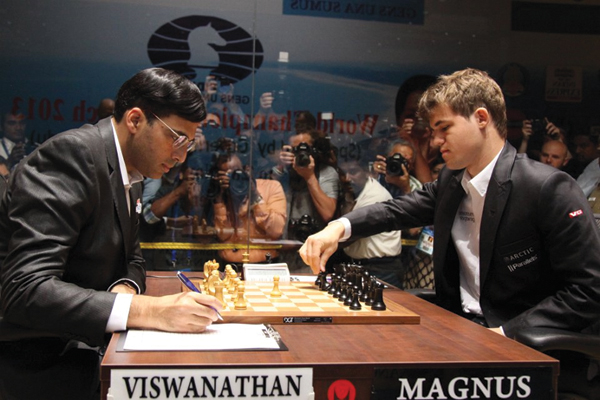Magnus Carlsen takes the game by storm
Though it may not get much attention this side of the Atlantic, the chess world has passed the crown to its new champion, Magnus Carlsen.
In a sport—yes, it’s a sport—recognized by the International Olympic Committee in which the word geeky is used to describe the top players in the world, Carlsen is the poster boy for its revolution.
He is the first player since the legendary Bobby Fischer to see mainstream fame since the height of the Cold War. Magnus is on the verge of becoming the game’s biggest celebrity in its millennial history. Endorsement deals, a female fan club, a large bank account, and millions of fans watching his every move are all aspects that have become synonymous with Carlsen.
Captivating the chess world at the age of 13 by becoming the youngest grandmaster ever, Carlsen, now 22, has a current rating of 2,850, which is the highest in the game’s history. Carlsen has become the World Chess Champion by defeating the current champion in a series.
Facing India’s Viswanathan Anand, a perennial giant in modern chess history, Carlsen brought the current champion to defeat in their 10-match series. Normally, a championship series is composed of 12 matches, where the first player to achieve 6.5 points wins—a draw is worth 0.5 points, a win is worth one, and a loss, zero.
Carlsen brings an unorthodox style to the chess elites. His play-to-win attitude is what separates him from the rest of the world’s best and is what has enabled him to take a commanding lead in the first seven matches. Carlsen was leading 4.5–2.5 and only needed two more points to win. The lead would best be described as a four-goal advantage with 10 minutes left on the clock in hockey; it was basically a guaranteed win and things were not looking good for Anand. After an eighth-game draw, Carlsen capitalized on Anand’s first and only blunder in their 9th game—a knight to f2 move which cost Anand his two-turn checkmate. Anand resigned after the move.
Live television has broadcasted the games between Carlsen and Anand in 48 countries, and in close to a billion households all throughout Asia. So how is it that a game that’s been around for more than a millennium and is televised to billions of households is receiving no coverage in North American media?
You could argue that the slow nature of the sport has contributed to the lack of popularity in North America—something similar to why soccer isn’t as popular here. In a society where seven-second vines have become the latest craze in social media, chess may not be fast enough to keep our attention. Regardless, it appears the chess world has witnessed the advent of a new king.








